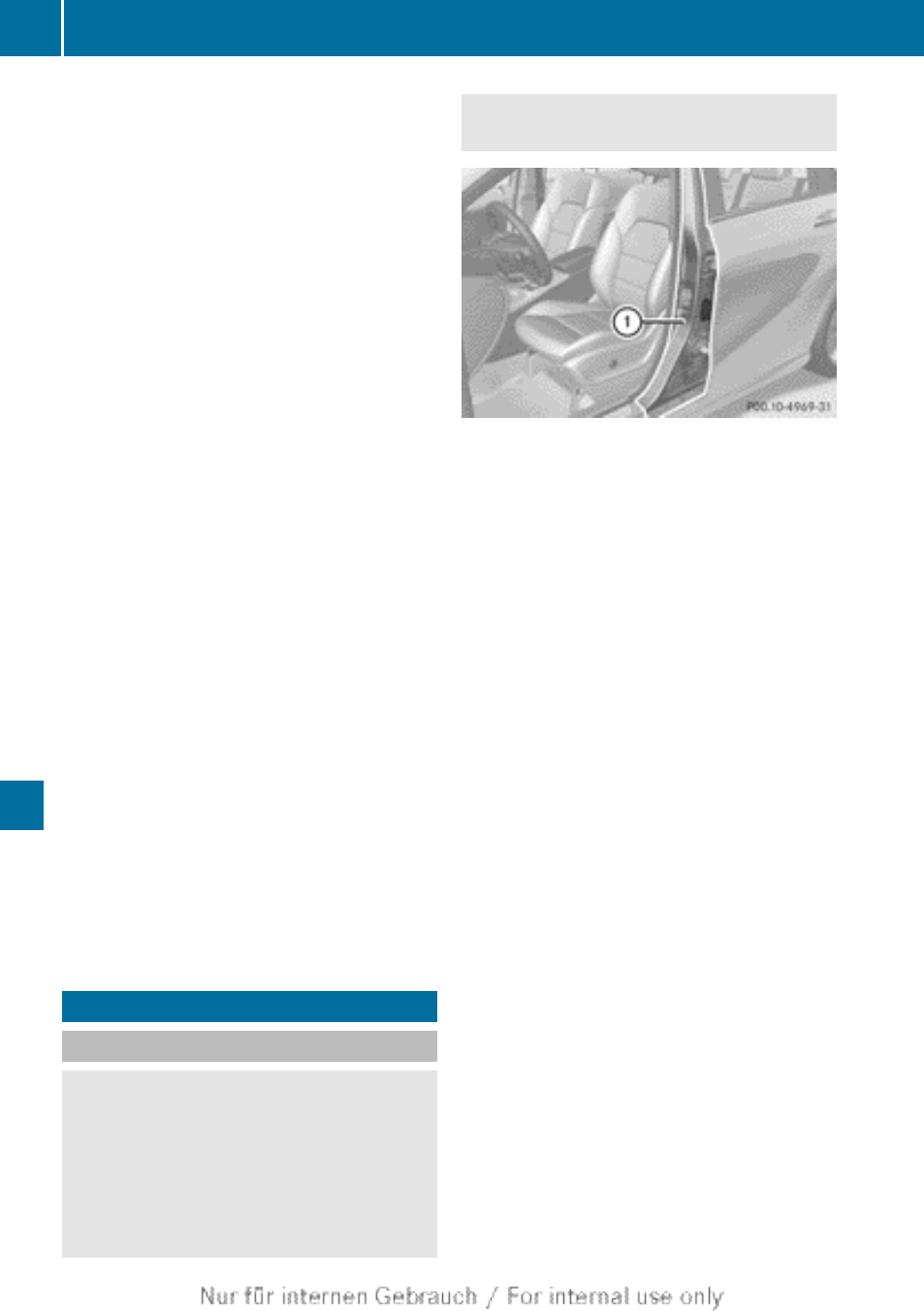Loading the vehicle, Instruction labels for tires and loads, Wheels and tires – Mercedes-Benz 2012 B Class User Manual
Page 308

X
Press = or ; on the steering wheel
to select the
Service
menu.
X
Press the 9 or : button to select
Tire Pressure
.
X
Press the a button.
The
Run Flat Indicator Active
Press 'OK' to Restart
message
appears in the multifunction display.
If you wish to confirm the restart:
X
Press the a button.
The
Tire Pressure Now OK?
message
appears in the multifunction display.
X
Press the 9 or : button to select
Yes
.
X
Press the a button.
The
Run Flat Indicator Restarted
message appears in the multifunction
display.
After a teach-in period, the tire pressure
loss warning system will monitor the set
tire pressures of all four tires.
or
If you wish to cancel the restart:
X
Press the % button.
or
X
If the
Tire Pressure Now OK?
message
appears, use the 9 or : button to
select
Cancel
.
X
Press the a button.
The tire pressure values stored at the last
restart will continue to be monitored.
Loading the vehicle
Instruction labels for tires and loads
G
WARNING
Overloaded tires can overheat, causing a
blowout. Overloaded tires can also impair the
steering and driving characteristics and lead
to brake failure. There is a risk of accident.
Observe the load rating of the tires. The load
rating must be at least half of the GAWR of
your vehicle. Never overload the tires by
exceeding the maximum load.
:
B-pillar, driver's side
Two instruction labels on your vehicle show
the maximum possible load.
(1) The Tire and Loading Information placard
is on the B-pillar on the driver's side. The
Tire and Loading Information placard
shows the maximum permissible number
of occupants and the maximum
permissible vehicle load. It also contains
details of the tire sizes and
corresponding pressures for tires
mounted at the factory.
(2) The vehicle identification plate is on the
B-pillar on the driver's side. The vehicle
identification plate informs you of the
gross vehicle weight rating. It is made up
of the vehicle weight, all vehicle
occupants, the fuel and the cargo. You
can also find information about the
maximum gross axle weight rating on the
front and rear axle.
The maximum gross axle weight rating is
the maximum weight that can be carried
by one axle (front or rear axle). Never
exceed the maximum load or the
maximum gross axle weight rating for the
front or rear axle.
306
Loading the vehicle
Wheels and tires